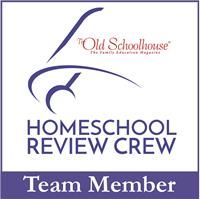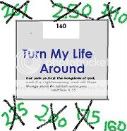
There is a Teacher's Manual, a Student Workbook in Cursive (manuscript is available as well), Basic Phonogram Flash Cards, Advanced Phonogram Flash Cards, Spelling Rules Flash Cards, Grammar Flash Cards and 2 sets of Game Cards (one set cursive, the other manuscript).
We also received the Phonogram & Spelling Game Book, chock full of ideas to make learning fun.
Lastly we received the Phonogram & Spelling Quick Reference (a fold out laminated card with all the rules listed) and a Spelling Journal.
- Developed phonemic awareness
- Learned all the sounds for the A-Z phonograms and
- Learned how to write the A-Z phonograms
There is a "Before You Begin" section to help the student get ready for the Essentials program. Even though I was confident that Tabitha possessed most of these skills, I did spend some time going through the 5 steps to help with Phonemic Awareness.
- Step 1: Developing a kinesthetic awareness of sounds
- Step 2: Gluing words together
- Step 3: Un-gluing words
- Step 4: Manipulating words
- Step 5: Syllables
As I learned at the Montessori, it is important for a child to develop phonemic awareness even before introducing them to the symbols or letters representing the sounds. Granted, I have taught phonemic awareness in conjunction with the letters with success; however, that does not negate the importance of a clear understanding of the sounds.
In this intro section, there is a ten page section with instructions on Teaching The Lessons. I spent quite some time reading through this to make sure I was confident in what to do.
Part One of the Lessons focuses on Phonograms, Exploring Sounds and Spelling Rules.
- The Phonograms section consists of two parts: Introduction of new phonograms, introduced in related groups, and Review of previously taught phonograms through dictation and games.
- In the Exploring Sounds section you will focus on phonemic awareness activities and analyzing options for how to spell sounds.
- Twenty-three of the lessons include teaching a new spelling rule.
Part Two focuses on Spelling dictation and analysis. Here in the intro you will find step-by-step directions for dictating the spelling list to your child, including listening for the syllables, saying each sound, writing the word, analyzing the word using the spelling hints, and marking the sounds.
Part Three focuses on Grammar, Dictation, Composition and Vocabulary Development.
- The grammar section consists of both review and learning new grammar rules. At the beginning of the book the child is learning simple concepts such as nouns and adjectives. Toward the end of the book they are learning coordinating conjunctions and dependent clauses.
- Dictation is the next section, where the child practices writing what you tell him/her to in relation to the new rules learned.
- In the Composition section the child is expected to use their new words and rules to compose their own phrases and sentences.
- Finally, there is the Vocabulary section where the student is taught how to combine and add to words to increase their vocabulary.
In addition, there are several optional activities in each lesson, plus every fifth lesson consists of an assessment and review activities.
The last section in the intro is the Resources Section where you will find all the spelling lists, phonograms, spelling rules and grammar rules.
To help facilitate the learning, flashcards are used. These contain the same information shown above in the Teacher Resources section.
Phonogram Flashcards Front:
Phonogram Flashcards Back:
Spelling Rules Cards Front:
Spelling Rules Cards Back:
Grammar Cards Front:
Grammar Cards Back:
At the beginning of each lesson, it tells you which flashcards you are going to need, along with any needed items to play the games.
So, how do you go about implementing these lessons? I am sure you would like to know the answer to that question. Well, that would depend on the age and level of your child. Here are the levels and how long it should take to complete Essentials using each suggested schedule.
- Struggling Readers and Spellers (8-adult, not reading at grade level) One lesson every 1 to 2 days, finish in 8-16 weeks.
- Struggling Spellers (9-adult, reading at grade level but needing spelling remediation) One lesson every 1 to 2 days, finish in 8-16 weeks.
- Emerging Readers and Spellers (6-7 years old) One lesson per week, finish in 40 weeks.
- Young Emerging Readers (5-6 years old) One lesson every two weeks, finish in 80 weeks.
- ESL Students (All Ages) Varies, finish in 8-80 weeks.
We have been using the Emerging Readers Schedule. We have been doing a little bit of each lesson each day.
Each week starts with an introduction to the new phonograms and practice of the new plus at least 20 of the old phonograms.
This box shows what is going to be taught in the lesson.
Below the box is a list of the materials listed. We then move into the lesson.
We then do the exploring sounds section, working on phonemic awareness.
And learn the new spelling rule.
On Day 2 it is time to dictate the new spelling list. Some of the words on the list are focused on the spelling rule and new phonograms others are not. It is a nice mixture of easier words and harder words.
When I dictate the word I am to say the word, read the practice sentence and repeat the word. Tabitha then says the word and tells me how many syllables are in the word. She writes it in her workbook and includes any markings (such as underlining 2-letter phonograms). Spelling hints can be given to help her spell it correctly.
On days 2-4 a game can be chosen from the Phonogram and Spelling Game book or we play the game listed.
We can choose between 9 different types of games
- Phonogram Card Games
- Active Phonogram Games
- Other Phonogram Games
- Phonogram Drills
- Sensory Practice
- Spelling Word Card Games
- Active Spelling Games
- Creative And Tactile Ideas For Spelling Practice and
- Spelling Games
At this point, Amelia has been known to join us, and some games are suitable for the whole family to play. A few of our favorite phonogram games are Phonogram Snatch, Phonogram Bingo, and Dragon.
Phonogram Bingo:
Some of our favorite Spelling Games are Blind Spelling, Spelling Basketball, and Creating a Crossword Maze.
Blind Spelling:
Spelling Basketball:
On Day 3, in addition to a game, we work on the grammar lesson, which includes labeling the spelling list.
We also do the phrase/sentence dictation. So far Tabitha has only been writing phrases as I dictate them, combining adjectives with nouns
On Day 4 we play both a phonogram game and a spelling game plus do the composition activity (this is a slight change from the suggested schedule as they list the composition activity on Day 5 and the Vocabulary lesson on Day 4). With the composition activity, Tabitha creates her own phrases.
On Day 5 a quiz is given for both the phonograms and the spelling words. Sometimes we do the vocabulary lesson, other times we haven't gotten to it.
Here Tabitha was to form compound words.
I love the way the lesson is broken up throughout the week, alternating games and workbook activities. There is a lot of writing in this curriculum, which would be sure to frustrate a young child without some fun, hands-on activities thrown in. Having only to do a little writing each day is great for this age group. I think it is great that all the aspects of language arts are integrated. They are learning the phonograms, really analyzing the spelling words and increasing their vocabulary, along with learning grammar. There are lots of optional activities to expand upon what was learned. We are learning that there is logic to the English language after all.
I will say that it was a tad tricky trying to follow the sample schedule at the beginning. I had noted that we did a little each day. Well, I kept getting confused with what part I was supposed to be doing and had to keep flipping back and forth in the book. I rectified this problem by listing each activity in my notebook, labeling if it was teaching phonograms, exploring sounds, spelling or grammar and then noting next to it which day of the week we would be completing the activity.
You may have noticed Tabitha has been writing mainly in print even though we were given the cursive workbook. While she knows her cursive letters, she hasn't really been getting a lot of practice with it. I didn't want to frustrate her as I want her to focus on the phonics and spelling lessons, so I allowed her to write in print the majority of the time. However, she has had the opportunity to begin reading words in cursive and I will continue having her write more and more in cursive as she gets more confident.
You can purchase the Essentials, Logic of English Complete Set for $243. I realize it sounds like a lot, but it's truly worth the price. It is a solid, quality program which can be used with more than one child. You would only need to purchase a Student Workbook and Spelling Journal for each additional child.
Each individual component can be purchased separately. You can check out the prices on the Logic of English site.
Members of the Crew have been spending the last month and a half using different products from The Logic of English. While we reviewed Essentials, there was the option to review the following products: The Rhythm of Handwriting (manuscript and cursive), Foundations (Levels A, B or C), and a couple of different apps (Doodling Dragons app or Phonics with Phonograms app).

































































![[PREMIO2009.png]](http://3.bp.blogspot.com/_ymwlW_48TOU/S1pfH_bfQPI/AAAAAAAADCs/4Qq0ZzKnfUE/s1600/PREMIO2009.png)




No comments:
Post a Comment
Thank you for visiting my blog today. I love to read your comments, so please leave me one if you have the time.
Blessings